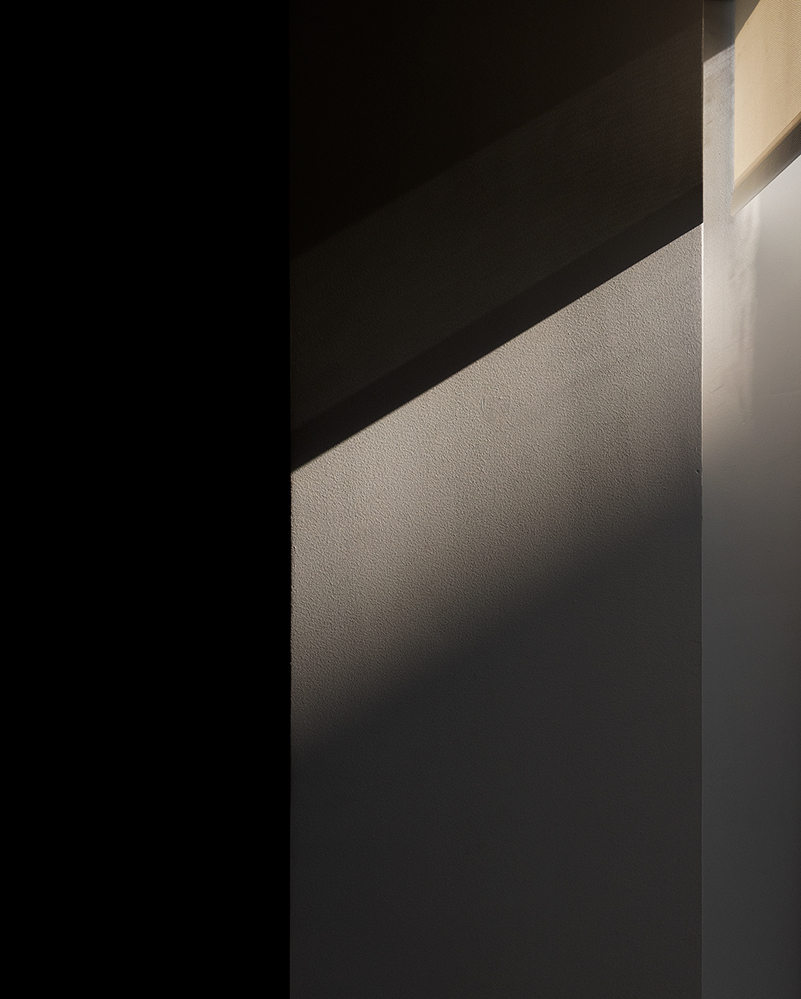

The majority of my creative practice relies upon the constructed image – for my work to serve as representational documents and catalogues, meticulous detail, notes and effort must be exerted in the creation of my work.
However, without access to a proper studio for the majority of the pandemic, I’ve found myself chasing brief glimpses of the sun filtering through my neighborhood, backyard fences, windows, doors and into my house. Perhaps I’m seeking a glimpse of what normalcy felt like before the world went sideways, perhaps I see it as an escape from this psuedo-isolation, or perhaps I’m just no different than a moth to a lamp and flutter to the bright spots.
Artist statement
The advent and proliferation of digital technologies have rapidly changed and challenged our notions of presentation and display, and as a first-generation product of the current digital age, my interests follow my upbringing in a bridged analog-digital culture.
How are images captured in the analog and digital domains? What methods are used to ensure the accuracy of what the camera sees?
Why do colors on digital displays not match each other? Is the color “red” that I see on my iPhone’s screen the same “red” that is seen on a desktop computer in Moscow? When I use Photoshop’s “Save For Web” function, what is happening to my photos?
Where did a certain memory take place, and is it remembered as fact or fiction? Who tells the stories we remember, and how are they documents for future generations?
As I focus on my personal experiences with analog and digital technologies through the capture, presentation and storage of imagery (data), my creative research and practice addresses these questions amongst the larger issues of developing an understanding that what we see might not be how we see it.
Photographic test charts are used to confirm that colors match the scene in which they’re captured. Calibration charts are used similarly, to ensure that the camera and lenses are performing to their maximum ability. But what happens when these charts become obsolete – many have expiration dates stamped into them, and others come with “use by” recommendations – is “red” from a 1950’s photographic card still as “red” as a 1980’s TV test chart? Can a contemporary lens still resolve to the maximum power illustrated in a test chart from the 1960’s?
Patterns, shadows and imperfections mar the supposedly blank surfaces of slide and movie projection screens. No longer are the optically flat surfaces sterile for displaying intended content, but instead, become physical landscapes of ripples, shadows, stains and tears that characterize and present the image in a unique light.
When images are converted for presentation on the Internet, the amount and vibrancy of possible colors is greatly reduced in an effort to compress file size and promote greater compatibility amongst a wide range of viewing intents. In the quest for interoperability and speed, what is lost in the translation?
Much like photographs, physical specimens have the potential to degrade over time. When a seminal archive of medical data becomes devoid of scientific usefulness, how does an object made for inquiry transform into an object of aesthetic pleasure?
These, and many others, are the questions I pose with my creative research and exploration.
While I am heavily influenced by the photographic image (and my earlier profession as a photojournalist and editorial photographer), my work does not solely live as photographs. Rather, I’ve found that as our cultural definitions of photography expand past the traditionally associated flat 2-dimensional image, my work as an artist adapts and responds through a myriad of digital, physical and tactile approaches. Whether a photograph, sculpture, 3d print or site-specific installation, the concepts of my inquiry are rooted in the notions of light, shadow, and image.
